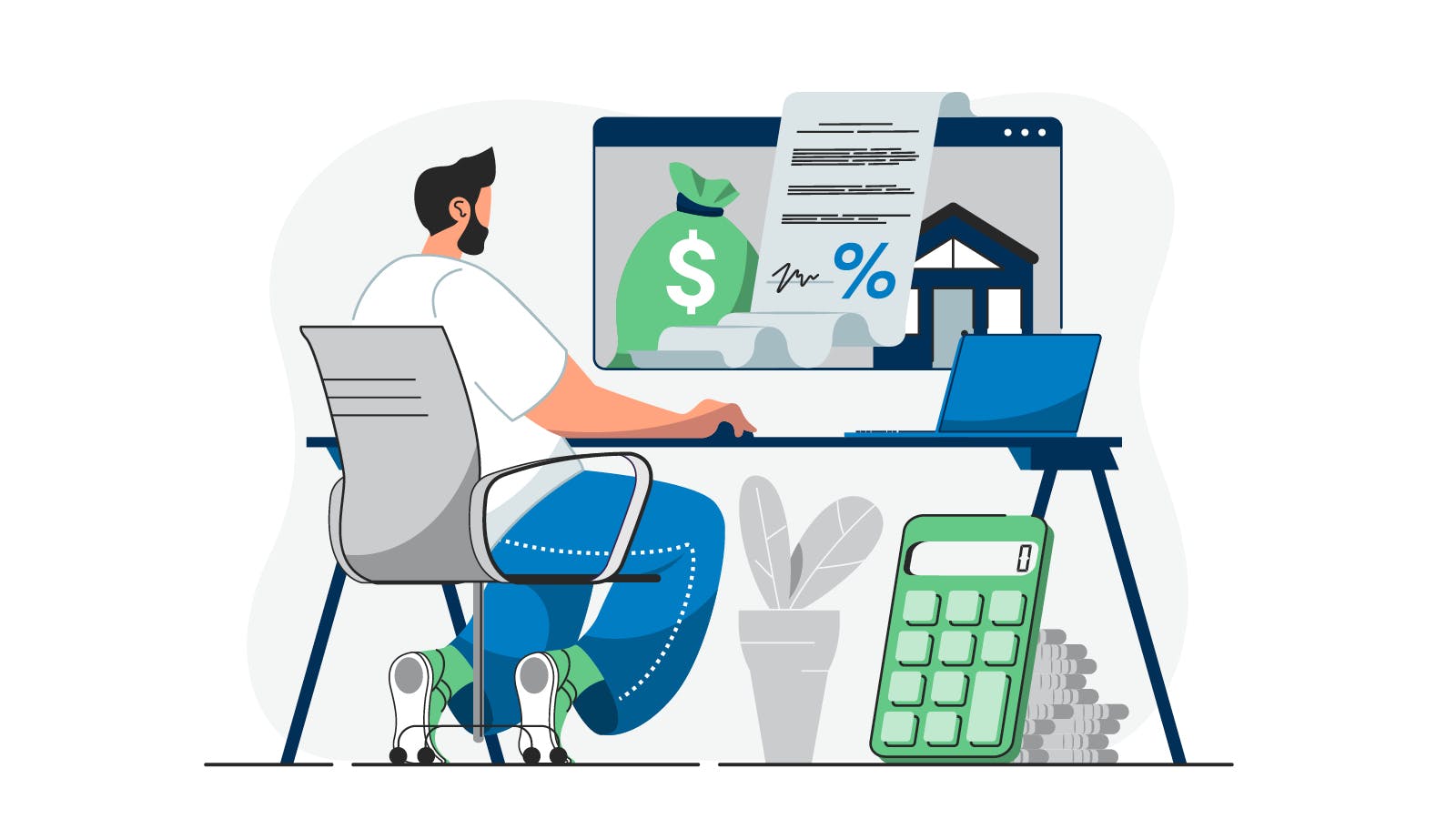With interest rates rising, many homeowners, who may not be entirely happy with their current mortgage situation, are wondering: is it a good time to refinance my home?
In general, experts suggest refinancing if you can reduce your home interest rate by .75 percentage points or more. If your interest rate wouldn’t go down significantly with a refinance, though, it could still be a prudent financial move. After all, motivations for refinancing are varied. Some homeowners move forward with the process to consolidate debt, utilize funds for home improvements or otherwise use their home equity to their advantage.
So, are you wondering if it’s a good time to refinance your home? Review this comprehensive guide to master some of the basics and help determine if refinancing in the current market could be right for you.
What is mortgage refinancing?
Refinancing is “a process that involves obtaining a new loan to pay off a current one”. When it comes to homeownership, there are two typical types of refinances: cash-out and rate-and-term.
Rate-and-term refinancing simply pays off and replaces your existing loan with the funds secured from your new loan. Homeowners who choose to refinance in this way are typically looking to either take advantage of lower interest rates, shorten their loan term or both.
Cash-out refinancing, on the other hand, leverages your home equity to leave you with extra cash once your existing mortgage is paid off and your new loan is solidified. You can use these excess funds for any purpose, with popular choices including paying off other debts or funding renovations. As part of a cash-out refinance, it may also be possible to lower your interest rate and/or shorten your loan term.
Potential pros and cons of refinancing
While refinancing can be a smart move, it certainly may not be right for everyone. And, like any mortgage loan, it’s a substantial financial decision.
Benefits of mortgage refinancing include:
- Lower interest rate than other loan types. If you’re thinking of consolidating your debt or borrowing money for a large purchase (think the down payment on an investment property or home renovations) the interest rate on a refinanced mortgage loan could be lower than what it would be if you used credit cards or other loan types for the same purpose. This is because mortgage loans are – by nature – secured by your home as collateral. This means less risk for the lender and lower cost for you.
- Shorter loan term and faster repayment. If you refinance from a 30-year to 15-year loan, while your monthly payment might go up you could have the loan paid off in half the time and could save substantially on interest payments over the life of the loan. You may also build equity much quicker this way.
- Removing private mortgage insurance (PMI). If your home equity has increased, there’s a chance you may qualify for a loan without still requiring added payments for PMI.
- You may qualify for cash-out refinancing and receive an excess amount in cash. Many homeowners put this money to work for them through renovations or paying down other lingering higher interest debts.
- Trade an adjustable-rate mortgage for a fixed-rate. If you’ve had enough fluctuation with your adjustable-rate mortgage loan, you may be able to refinance into a fixed-rate loan. Even if your interest rate is slightly higher, at least you’ll know it won’t switch up on you in the future. This stability may be priceless to certain owners.
- More money in your pocket! If you secure a significantly lower interest rate, you’ll owe your lender less each month.
Cons of mortgage refinancing include:
- Refinancing can be cost preventative. Costs and fees are similar to those you paid when you initially took out your mortgage loan, so you may not actually save money until well into the life of the new loan.
- Prepayment penalties. Depending on your lender, there may be charges associated with paying off your existing loan early. Investigate thoroughly before committing.
- Costs may increase. Depending on the new loan, you could end up paying much more. If you refinance from a 15-year to a 30-year mortgage, or if you don’t secure a lower interest rate, you could pay much more monthly and/or over the life of the new loan.
Costs and fees associated with refinancing
When asking, “is it a good time to refinance my home,” you’ll certainly want to consider costs. Refinancing costs are generally like the closing costs you paid when taking out your original mortgage loan. Totals may include government recording costs, appraisal fees, credit report fees, lender origination fees, title services, tax service fees, survey fees, attorney fees and underwriting fees. According to Bankrate, typical cost comes in at around $2,400 but will depend on your location, the mortgage professional you use and the total loan amount. Your mortgage professional can provide a comprehensive list of fees for your unique situation.
There could also be loan options offering low or zero closing costs, for those who don’t have, or don’t want to spend, the cash to pay upfront costs. This doesn’t erase these costs; it just rolls them into the principal balance of what you will owe on the loan and allows you to pay them over time instead of in one lump sum. But, this option will require you to pay interest on the fees rolled into the loan.
Steps to refinancing
If you’ve done the research and decided refinancing may be right for you, the steps are like obtaining your original mortgage loan:
1. Define your goal
Why exactly are you refinancing? Are you hoping to reduce your monthly payments, shorten your loan term, or borrow cash for repairs? Getting specific with your goal will guide your refinance process and help ensure you end up with the right loan for you.
2. Check your credit
Just like when you were originally shopping for a mortgage loan, the higher your credit score, the better rate you are likely to receive and the more loan options you may have. If you’re not quite where you want to be, consider dedicating a few months to boosting your score before officially starting the process.
3. Gather documents
Start gathering documentation well ahead of time. Collect pay stubs, tax returns, bank statements, credit reports, mortgage statements and any additional files your mortgage professional may request.
4. Estimate your equity amount
Your home equity is the value of your home minus the amount outstanding on your current loan. Online home search sites or a real estate or mortgage professional can give you a good estimate of home value, while your outstanding balance can be found on your monthly mortgage statement. Higher equity equals less potential risk for the lender, therefore potentially more beneficial loan terms for you.
5. Compare lenders
Consulting with a mortgage broker who will shop around for the perfect lender/loan program for you could yield serious savings! Consider interest rates, fees, and deadlines to find the right fit.
6. Budget for costs and fees
Your lender may require your home be appraised. Plan to cover this cost (likely no more than a few hundred dollars) and be sure to fill the appraiser in on any improvements you’ve made since purchasing. You’ll also need to cover closing costs one way or another but, depending on the agreement with your lender, these charges may be rolled into your loan amount. Either way, come to closing with a good idea of the costs and fees you’re responsible for covering and have as much cash on hand as needed.
7. Leave a paper trail
It’s always a good idea to collect and store copies of all new loan documents, contact information for parties involved and other files. This may also be a good time to enroll in autopay!
Is it a good time to refinance my home?
The truth is, there is no one right answer to this question. No major financial decision should be taken lightly, and what’s right for one homeowner certainly may not be for another. Be sure to do your research, find answers to any lingering questions and weigh the pros and cons when it comes to refinancing.
Published on July 18, 2022


